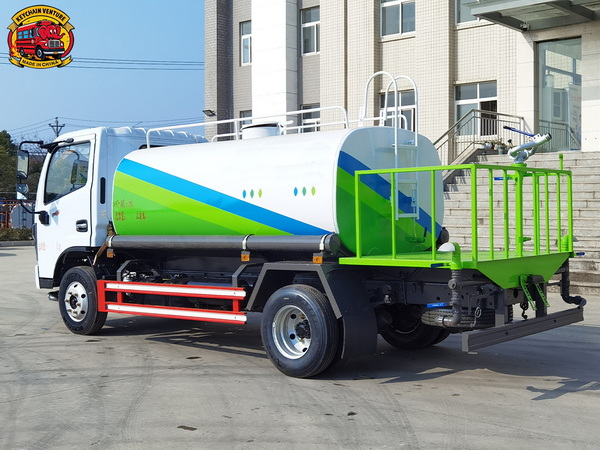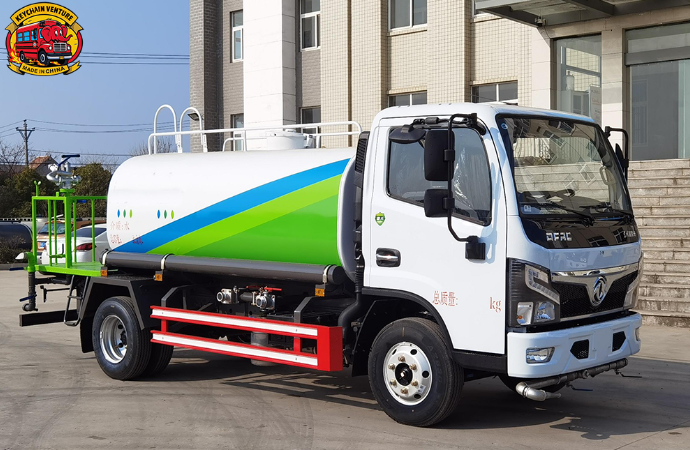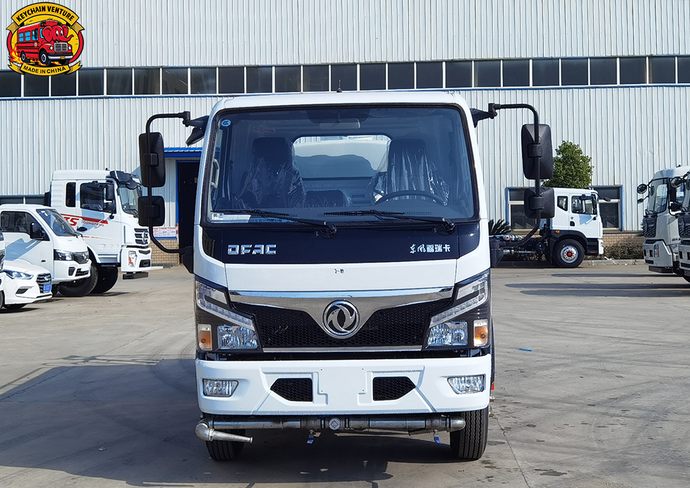Views: 222 Author: Amanda Publish Time: 2025-10-29 Origin: Site








Content Menu
● Understanding What a Water Truck Is
>> Typical Water Truck Components
● Do You Need a Commercial Driver's License (CDL)?
>> CDL Requirements in the United States
● International License Equivalents
● Steps to Get Licensed for a Water Truck
● Water Truck Operation Skills and Training
● Career Opportunities for Water Truck Drivers
● Safety Requirements and Best Practices
● Cost of Owning and Operating a Water Truck
● Benefits of Using a Water Truck
● Technological Advancements in Water Trucks
● Common Challenges in Water Truck Operation
● FAQ
>> (1) Do I need a CDL to drive a small water truck?
>> (2) What is the “tank endorsement” for?
>> (3) Can I rent a water truck without a CDL?
>> (4) How long does CDL training take?
>> (5) What is the average capacity of a water truck?
Operating a Water Truck—a heavy-duty vehicle designed for hauling and distributing large quantities of water—is critical in industries such as construction, mining, agriculture, and firefighting. Many people wonder: Do you need a special driving class or license to operate one?
This article explains license requirements, types of water trucks, training, safety standards, and how to become a professional Water Truck driver, providing comprehensive insights for anyone interested in this field.

A Water Truck is a specialized commercial vehicle designed to carry large tanks filled with water. Depending on its size and purpose, a water truck may be used for:
- Dust control on construction or mining sites
- Soil compaction during road building
- Fire suppression support in emergency areas
- Agricultural irrigation
- Municipal watering of landscapes and parks
A typical water truck includes:
- Large capacity water tank (ranging from 2,000 to 10,000 gallons)
- High-powered pump system for pressure water distribution
- Multiple spray nozzles for uniform water dispersion
- Cabin control unit for valve and flow adjustments
- Heavy-duty chassis (often based on truck brands like Kenworth, Isuzu, or Dongfeng)
Understanding these components helps operators maintain and use the vehicle efficiently, ensuring safety and functionality on the job site.
Yes. In most countries, including the United States and China, operating a Water Truck requires a Commercial Driver's License (CDL) due to the truck's size, weight, and operational complexity.
- Class A CDL: Required if the vehicle combination exceeds 26,001 pounds (for example, when towing a trailer with a tank).
- Class B CDL: Usually sufficient for most water trucks, which are single-unit vehicles with a gross vehicle weight rating (GVWR) over 26,001 pounds.
- Endorsements: Some states require additional endorsements such as:
- Tank Vehicle (N) endorsement for carrying liquid loads
- Hazardous Materials (H) endorsement if transporting treated or chemically mixed water
For Chinese drivers, the equivalent is a “A2” or “B2” class commercial driving license, depending on the truck's configuration and gross weight. Drivers must also complete a professional training course and pass a vehicle control skill test.
Different countries have specific licensing and training requirements for water truck operation, ensuring safety and legal compliance. The table below summarizes common license requirements:
Country | Required License Class | Equivalent Permit | Notes |
United States | Class B or A CDL | With Tank (N) Endorsement | Mandatory for most water trucks |
Canada | Class 3 or Class 1 | Provincial variations | Requires air brake endorsement |
Australia | Heavy Rigid (HR) | Some require competency tests | Needed for vehicles over 8,000 kg |
China | B2 or A2 License | Professional operation permit | Includes theoretical and practical exams |
United Kingdom | Category C Licence | Must meet CPC Driver standards | Covers vehicles over 3.5 tonnes |
Knowing local regulations is the first step to legal water truck operation.

1. Check Local Regulations: Start by consulting your transport authority (e.g., DMV or traffic bureau).
2. Enroll in a Commercial Driver Training School: Certified courses prepare you for both written and driving tests.
3. Pass a Medical Exam: Demonstrate physical fitness to safely operate commercial vehicles.
4. Complete CDL Knowledge and Skills Tests: Includes vehicle inspection, control, and road tests.
5. Obtain Tank Endorsement (if required): Additional written tests certify you to carry liquid cargo safely.
Operating a Water Truck safely requires understanding both mechanical and environmental principles.
- Fluid Dynamics and Water Load Management: Prevent liquid surge during braking or turning, which can destabilize the vehicle.
- Pump and Hose System Use: Effectively operate spray nozzles and control valves for even water distribution.
- Vehicle Stability and Load Balancing: Essential for preventing rollovers and ensuring safe cornering.
- Maintenance and Inspection Procedures: Routine checks to avoid leaks, ensure pump function, and maintain tank integrity.
- Environmental Safety Practices: Minimize water waste and prevent contamination or erosion due to improper application.
Qualified Water Truck operators have opportunities in a variety of sectors:
- Construction and roadworks
- Mining and heavy industry
- Firefighting and emergency response
- Agriculture and irrigation services
- Municipal public service
Salaries for water truck drivers in the U.S. in 2025 typically range between $45,000 and $70,000 per year, depending on experience and location, with opportunities for bonuses or overtime in high-demand areas.
Water truck operation demands rigorous safety standards.
Before setting out, operators should:
- Inspect brakes, tires, and steering components
- Check tank mounts and hoses for wear or leaks
- Test spray system pressure
- Verify load level and balance within the tank
- Drive at reduced speeds, especially when the tank is partially filled to reduce liquid momentum.
- Avoid sudden stops or sharp turns to prevent rollovers caused by shifting water.
- Maintain communication with site supervisors on fluid delivery requirements and road conditions.
- Use water efficiently by adjusting spray pressure to avoid runoff or puddling.
- Ensure discharges comply with local environmental regulations.
- Employ filtration systems if hauling recycled or untreated water to avoid contamination.
Owning and operating a water truck involves multiple cost factors that impact profitability.
Cost Factor | Average Range (USD) | Description |
Purchase Price | $80,000 – $200,000 | Depending on tank capacity and chassis |
Fuel Cost | $0.45 – $0.65 per mile | Large engines use significant fuel |
Maintenance | $5,000 – $10,000/year | Includes pumps, hoses, chassis upkeep |
CDL Training | $3,000 – $7,000 | Professional school tuition |
Insurance | $2,500 – $5,000/year | Based on vehicle value and usage |
- Efficient Dust Control: Reduces airborne dust at work sites, improving air quality and visibility.
- Supports Earthwork Operations: Moistening soil enhances compaction quality for construction projects.
- Emergency Utility: Provides ready water supply for firefighting or disaster relief.
- Versatility: Applicable across construction, agriculture, and municipal projects.
Modern water trucks incorporate innovative features to improve safety, efficiency, and environmental compliance:
- GPS Route Management: Optimizes delivery schedules and tracks locations.
- Smart Flow Regulators: Precisely control water output to match needs and conserve resources.
- Remote Pump Controls: Allow operators to adjust spray settings from the cabin.
- Real-time Tank Monitoring: Sensors provide live updates on water levels through digital dashboards.
- Eco-Optimized Engines: Reduce fuel consumption and emissions.
- Navigating difficult terrains like mud, gravel, or uneven surfaces while maintaining load stability.
- Managing extreme weather conditions, including heat, rain, and dust storms.
- Balancing long working hours with consistent safety vigilance.
- Ensuring compliance with environmental and safety regulations at varying job sites.
Despite these challenges, many water truck operators find rewarding careers due to steady demand and hands-on work.
Do you need a class to drive a water truck? The definitive answer is yes. Most countries require a commercial license or specific class endorsement to legally and safely operate a water truck. Proper licensing, combined with specialized training and adherence to safety protocols, ensures drivers can handle the unique challenges inherent in water truck operation. With growing infrastructure needs and environmental demands, skilled water truck operators remain essential players across industries worldwide.

Yes. If the vehicle's gross vehicle weight rating exceeds 26,001 pounds, a Class B CDL is required, regardless of the truck's overall size.
This endorsement certifies that a driver understands the safe carriage of liquid cargo, preventing incidents caused by water movement within the tank.
Most commercial rental companies require drivers to provide a valid CDL before operating a water truck, especially for large or heavy vehicles.
Typically between 4 to 8 weeks, depending on the program's intensity and the student's prior experience.
Standard water trucks generally carry between 2,000 and 6,000 gallons, with specialized models holding over 10,000 gallons.